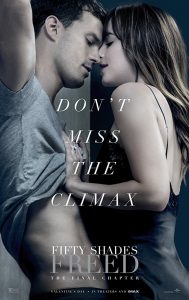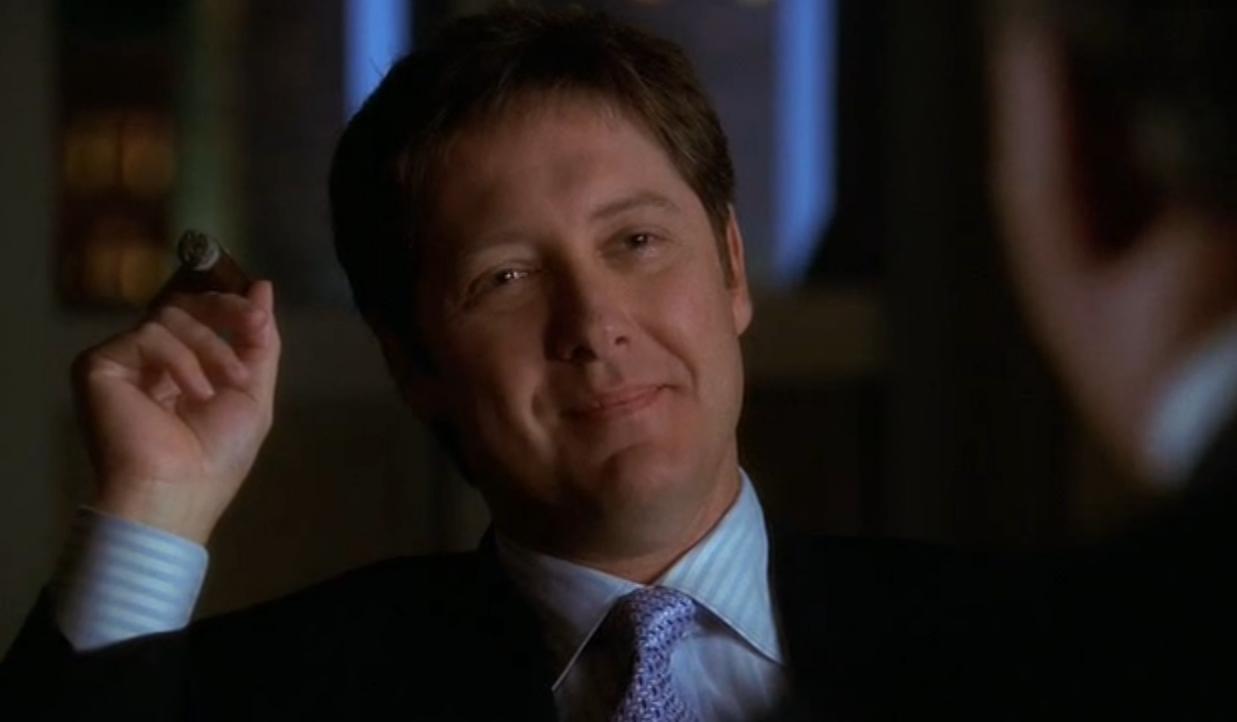Back when I first joined Pop-Verse, reviewing the first Fifty Shades film was an early assignment of mine. In fact, it was criteria for me to join the site. Megan, the editor-in-chief, sat atop her throne composed of the skulls of former contributors and demanded I face this gruesome trial as a rite of passage. Three miserable films later and I have come to the end of this harrowing ordeal. It is done. Over. I never have to suffer through this onslaught again.
Given the vitriol I have poured over the first and second installments, you might be surprised to know I have nothing new to say here. Because it’s all the same. This final film is a near-identical regurgitation of the last one. It is abundantly clear that there was not enough plot, character or content to sustain one film, let alone three. Which is why we go through the same motions every time. The same bland emotionally-stunted characters who arbitrarily construct conflicts only for them to immediately resolve without consequence. Among its host of sins, this series can add entropy.
A series of erotic thrillers for materialist prudes
 For those somehow not versed in these films and my long-standing grudge against them, the big issue is their dishonesty. The Fifty Shades films claim to be erotic thrillers steeped in bondage kink. Except they are sexless, dull and have an ignorant contempt for BDSM. One thing that distinguishes Freed from its predecessors is actually its treatment of BDSM. The previous two have framed it as something deplorable to fix. This one simply leaves it out altogether beyond some glimpses of sex toys and restraints on the upholstery. The startling few sex scenes that appear are (as usual) aggressively tame, primarily just depicting missionary sex with a handcuff implied or passed over quickly.
For those somehow not versed in these films and my long-standing grudge against them, the big issue is their dishonesty. The Fifty Shades films claim to be erotic thrillers steeped in bondage kink. Except they are sexless, dull and have an ignorant contempt for BDSM. One thing that distinguishes Freed from its predecessors is actually its treatment of BDSM. The previous two have framed it as something deplorable to fix. This one simply leaves it out altogether beyond some glimpses of sex toys and restraints on the upholstery. The startling few sex scenes that appear are (as usual) aggressively tame, primarily just depicting missionary sex with a handcuff implied or passed over quickly.
And you might think, “well, at least there will be plenty of nudity if the sex is a bit limp”. Frankly: eh. Once more, Dakota Johnson is sexualised far more than Jamie Dornan. She has to get her kit off much more frequently and you need to try a bit harder with me than just flashing nipples every 20 minutes. The camera seems to think that the most erotic part of Dornan’s body is his belly button. Considering the film is granted upper tier certification (incidentally, I do not think anything on display here counts as ‘strong sex’ – this is not an 18), you’d think they’d just pull their finger out and film Dornan’s penis. It’s just a penis after all. This is meant to be an erotic thriller and it is positively coy about hardcore nudity.
Why pretend you aren’t watching a bad and really drawn-out romcom?
 This may surprise some but the crucial thing to understand is that these are erotic thrillers for prudes. Anastasia Steele’s adventures do not appeal to the target audience because they are actually sexy – this is simply a pretense that some sort of taboo is being broken. No, the thrust of the drama and key interest is Ana’s ability to accumulate as much material wealth as possible via her super-rich hubby. You doubt me? You’ll note during the big close of Freed when we flash back through the major landmarks in Christian and Ana’s relationship, there is sparingly little sex. Instead we are reminded of the galas, the jets, the designer penthouses, the jewelry, etc. The very end is not a shot of the couple in the throes of passion, but idyllic shots of the couple on the lawn outside their big house with their new child in tow.
This may surprise some but the crucial thing to understand is that these are erotic thrillers for prudes. Anastasia Steele’s adventures do not appeal to the target audience because they are actually sexy – this is simply a pretense that some sort of taboo is being broken. No, the thrust of the drama and key interest is Ana’s ability to accumulate as much material wealth as possible via her super-rich hubby. You doubt me? You’ll note during the big close of Freed when we flash back through the major landmarks in Christian and Ana’s relationship, there is sparingly little sex. Instead we are reminded of the galas, the jets, the designer penthouses, the jewelry, etc. The very end is not a shot of the couple in the throes of passion, but idyllic shots of the couple on the lawn outside their big house with their new child in tow.
All of which leads me to one thought: what was the point? If you just wanted to watch a film about a woman cornering a reluctant man into commitment, you could watch any number of sappy sexist traditional romcoms. All the factors are here. Treating men and women as flat gender stereotypes: check. Hurtling towards a conformist domestic setup: check. Depicting every woman outside of the protagonist’s social circle as a harpy: check. Why even bother pretend that there is a kinky sex element when it is so clearly absent? The level of self-deception required to engage with this film is astounding.
But I am not angry anymore. Just tired, and a bit relieved. It’s over now. I am free.
Verdict: These terrible films are at an end. I am glad to see the back of them.
 Pop Verse Pop Culture Universe
Pop Verse Pop Culture Universe






